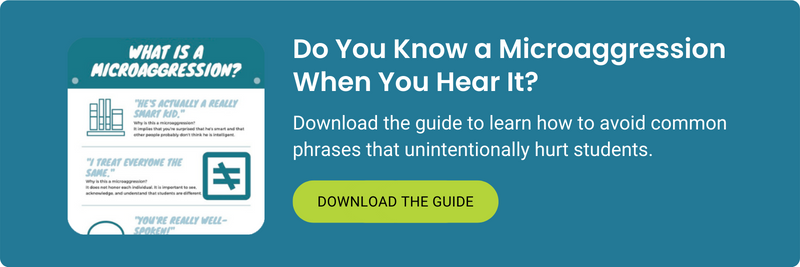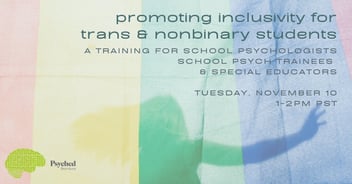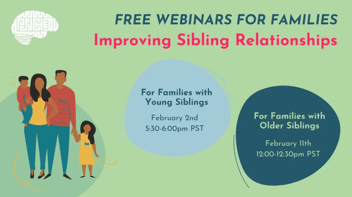
Last summer, we decided as a company to make a radical change in our reports. We decided to use gender-inclusive pronouns for every student in every report as a way to support gender inclusivity and recognize the spectrum of gender identities.
We made this decision after reading GLSEN’s 2019 study Harsh Realities: The Experiences of Transgender Youth in Our Nation’s Schools. This study showed that “transgender students face much higher levels of harassment and violence than LGB [lesbian, gay, and bisexual] students. And these high levels of victimization result in these students missing more school, receiving lower grades and feeling isolated and not part of the school community.” Over half of trans students reported experiencing physical harassment at school and close to 90 percent of trans students were verbally harassed and/or heard derogatory remarks at school.
Moving From Awareness to Action
There seems to be a general awareness of the ongoing discrimination and harassment that gender diverse students and adults experience. However, we’ve realized that many of us, whether school psychologists, special education teachers, administrators, or parents, aren’t well-versed on sex, gender, or pronouns, much less how to take actionable steps to help promote gender equity. We thought we’d take a few minutes to share some key learning and takeaways so that we can all grow together.
Question: What’s the difference between sex and gender?
Answer: Sex is based on genitalia. (Not everyone is born with exclusively male or female genitalia.) Both sex and gender are usually assigned at birth and are based on the genitalia of the person. If a person’s gender matches their sex assigned at birth, we call that being cisgender. So, for example, if you are born genetically female and identify as a woman, you are considered to be gender congruent. Many people do not identify with the sex assigned at birth. They may identify as trans, nonbinary, genderfluid, agender, or another gender. Gender is a spectrum!
Here are a few vocabulary words you may or may not be familiar with:
Cisgender (cis) a person whose gender identity and sex assigned at birth align
Transgender (trans) a person whose gender identity differs from assigned sex at birth
Agender a person who sees themselves as not having a gender
Genderfluid a person whose gender changes – meaning that they experience gender as a changing, dynamic part of themselves
Non-binary a person who does not identify exclusively as masculine or feminine
To better understand gender vocabulary, check out Gender Spectrum’s resource The Language of Gender.
Question: What are the different aspects of gender?
Answer: Humans have many facets and dimensions, so it’s not surprising that our gender also has several dimensions. Some of the aspects of gender include body, identity, and social. Our bodies are often gendered by society, and everyone expresses their gender in different physical ways. Our identities are deeply rooted in our sense of self, and we use different names to convey that identity. Gender identities include (but are not limited to) binary, nonbinary, and ungendered. And remember, gender is not always the same as sex assigned at birth! Finally, our genders have a social dimension as well. It is how we present our gender to the world, and how the world perceives and interacts with us.
Want more information about dimensions of gender? Check out The Gender Unicorn from Trans Student Educational Resources (TSER).
Question: How early do kids know their gender identity?
Answer: The American Academy of Pediatrics says that most kids’ have a sense of their gender identity by age 4. Humans don’t have a “preference” when it comes to gender. Gender is part of who we are, and we cannot be forced to change it.
It’s also important to remember that vocabulary is always growing and changing. Just because a person is likely to have a sense of their gender identity before beginning kindergarten doesn’t mean they’ll use the same terms throughout their lifetime to self-describe.
Question: How do I know which pronouns to use?
Answer: We get asked this question A LOT. And the answer is simple: ask each person! Just like you ask people for their names, you can also ask for their pronouns. If you’re not sure how to do this, we have a few tips.
1. Lead by Example.
It helps if you introduce yourself using your name and pronouns before you ask someone for their pronouns. You can also include your pronouns in your email signature and on your Zoom name.
2. Normalize asking for pronouns by incorporating it into your routine.
You can’t look at a person and assume their gender, so don’t try! Instead, make it a point to introduce yourself using your name and pronouns, and ask everyone else for their name and pronouns in every meeting. Pretty soon, it’ll become a habit.
3. Don’t call pronouns “preferred.”
Gender is an integral part of who we are, and the pronouns we use aren’t optional or preferred. They are part of our identity. So when you ask someone for their pronouns, don’t ask for their “preferred” pronouns. Just ask for their pronouns!
4. Ask kids for their pronouns.
Since kids have a stable sense of their gender identity by 4, it’s reasonable to assume that they know which pronouns they want you to use! Some kids might not be familiar with pronouns yet, but you should still ask.
Question: Why are people using “they” more often?
Answer: The singular pronoun “they” isn’t new at all, actually! The Oxford English Dictionary traces singular they back to 1375 (check out the etymology here). This pronoun is used by some people who identify as nonbinary or agender. It is also used as an inclusive pronoun for any person. If you haven’t specifically asked a person for their pronouns, they is the most appropriate pronoun to use.
Question: Why do you use “they” as the pronoun for every student’s report?
Answer: We find that using gender-inclusive pronouns in report-writing is a good way to honor all students’ identities without compromising their confidentiality or making assumptions about who they are.
In some areas, students have robust state laws and well-developed district policies that allow them to be recognized for who they are, without requirements for family members to agree. In other areas, students don’t have these rights yet, which leaves gender diverse students in a very vulnerable position and can often lead to stress between students, families, and schools.
We also know that many students are not “out” in all settings, meaning that they may not share their gender identity with all people in all environments in their lives. As educational professionals, FERPA requires that we protect the privacy of students’ education records. This means that we can’t “out” a student by providing their gender if they don’t want us to share it in writing, and we can’t refer to their assigned gender at birth (if outdated) if they tell us they identify as another gender without risking a confidentiality breach.
Additionally, many students may choose not to share their pronouns with school psychologists, school administrators, or other school professionals who work with students in a short-term or limited capacity. Why? Because there’s a power imbalance and we haven’t had a chance to build a relationship with the student to help them feel secure in sharing personal information with us. So even if we remember to ask a student for their pronouns (which is still an area of much-needed growth in education), we can’t guarantee our students will be willing to share with us.
Other students, such as young students, students who are dual language learners, or students with communication differences, may not have the vocabulary to communicate their gender and pronouns with us.
For all these reasons, we think that using the gender-inclusive pronoun they is a great idea. Because it is an inclusive term (think of “mankind” vs. “humankind”), it’s appropriate for everyone. Because we use it in all reports, we don’t have to worry about violating a student’s confidentiality if they are gender diverse and are not yet sharing with everyone. We ensure that we don’t accidentally misgender students who may not have felt comfortable sharing their gender pronouns with us or who do not yet have the vocabulary to communicate their gender with us. By using gender-inclusive pronouns, we can be sure that students who identify with another gender later in their lives will not feel misgendered by our reports.
Ready to promote gender-inclusivity in your home or school? Our expert school psychologists are here to help. Schedule a free consultation today!





